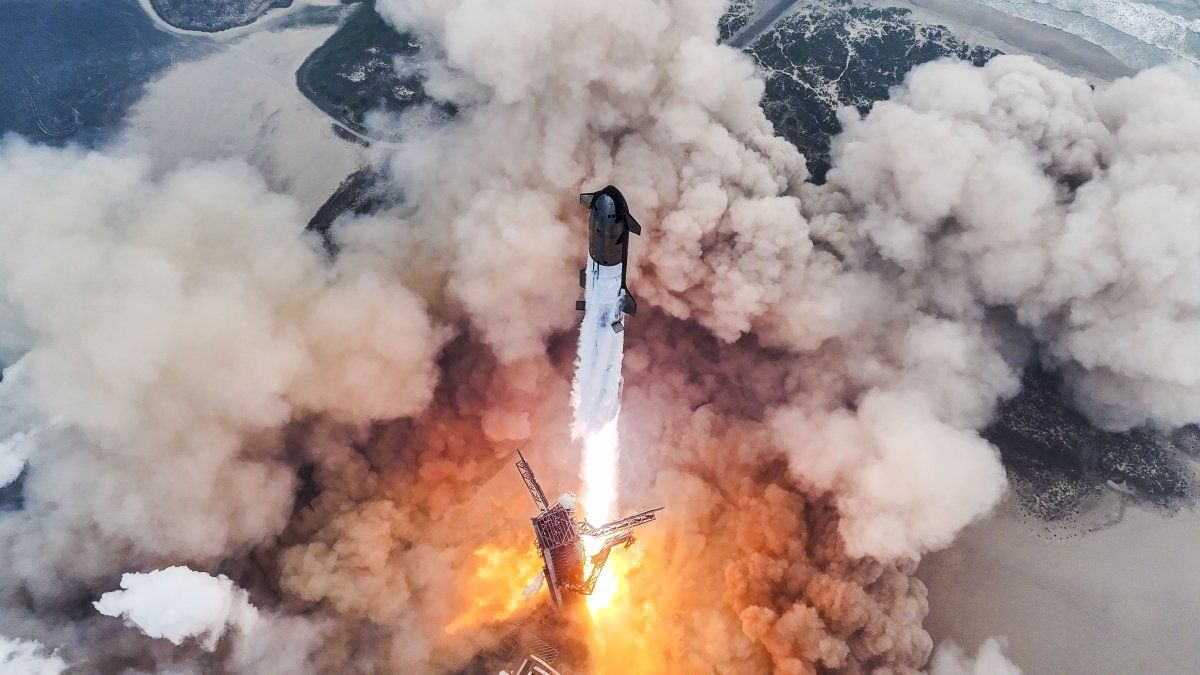Just a couple of weeks ago, early on a Sunday morning (more precisely at 7:30 on October 13), the world witnessed a great achievement of science and technologysuch as the recovery of the Super Heavy propellant, part of the Starship aircraft, property of the private firm SpaceX, dedicated to aerospace manufacturing and space transportation services.
Perhaps at a time in history where we have generally lost our capacity for wonder, the recovery of the Super Heavy has been of such complexity that the effective achievement marks a milestone in the history of access to spacedue to the possibility of reuse of a rocketfor the future considerable reduction in the cost of space travel: Now the use of a launcher can be prorated in more than one mission, something that until the reference Sunday could not be done, it was “one shot.”
Aerospace industry in “bullish” mode and the key role of states
The milestone is the tip of the iceberg of an industry that remains bullish, becoming the protagonist of our times, with sustained growth. For the aerospace industry (in conjunction with the defense industry) a compound annual growth rate (CAGR) of 5.85% is expected over the period 2024-31. The prominence that large companies are gaining is also due to the partial removal of national states from the driving role of the race for access to space, and the emergence of private capital with the intention of taking the baton and leading this competition.
However, despite the great lights focusing on Elon Musk (owner of Space Jeff Bezos (Blue Origin) and/or Richard Branson (Virgin Galactic), behind the scenes The States continue to pull the strings; with his decisive contributions to scientific and technological developments, with regulatory frameworks and promotion policies, with the development of critical infrastructures and with investment in education and training of scientists, engineers and specialized technicians.
Thus we can see, for example, that the United States is beginning with the development of DRACO Project (in English Demonstrator Rocket for Agile Cislunar Operation), which is neither more nor less than the first approach to a rocket with thermonuclear propulsion.
The DRACO project is shared between two large North American government agencies, such as the POT (the National Aeronautics and Space Administration), widely recognized for its achievements in access to space (the landing on the Moon the most relevant of all), and the DARPA (Defense Advanced Research Projects Agency), not as famous as NASA by name although it is by its main creation: Internet. Both state agencies manage budget allocations (public funds) relevant enough to achieve their objectives.
So much The landing on the Moon and the Internet are more than relevant milestones in world science and technology, the first of them with a background of projection of incontestable power (access to space), the second no less important nor as strident but which hides the possibility of dominating the world by being a technological authority on the Internet.
It is that following the idea of power projection, in addition to the economic capacity of the countries (measured in terms of the GDP they generate), the military capacity (reflected in the size of a nation’s military instrument and/or its defense expenditures) , Nations can also have a technological capacity that allows them to prevail over the rest.
Geopolitics of technology
In this sense, there are nations that strive not only to be technologically autonomous, but to propagate their own developments and dominate the world with these tools, while many others (in a second order of priority) seek the best place they can occupy between the idea of sovereignty and that of technological dependence, issues that are ultimately sides of the same coin. From the management of this issue arises the geopolitics of technology.
And just like USA It gives room for private companies to continue advancing technologically, it also continues to finance new strategic developments with the public budget; they do the same China, Russia and the European Union among other preeminent actors in the current space age. While countries like India, South Korea and Japan are trying to extend the borders of their autonomy in access to space, maintaining the second order of priority mentioned above.
Science and technology: what should Argentina do?
Argentina will surely also look for its “ideal place” among technological dependence and sovereignty. The country has been feeding the dream of certain autonomy since the 1950slike the great powers with public funds, with recognized and valued achievements in areas such as nuclear and aerospace.
This issue should in no way be cut off, because (now unlike the same mirror in which we reflect ourselves) We don’t have Elon Musk, Jeff Bezos, or any mega-millionaire. that can accompany a process of national empowerment from technology and, in the event that no more investment is actually made, we would then be amputating “the laurels that we knew how to achieve.”
Director of ESPADE, member of the IRI-UNLP. Author of the book “5G, The Technological War of the Century”, in X (Twitter) @G_Balbo
Source: Ambito
I am an author and journalist who has worked in the entertainment industry for over a decade. I currently work as a news editor at a major news website, and my focus is on covering the latest trends in entertainment. I also write occasional pieces for other outlets, and have authored two books about the entertainment industry.




